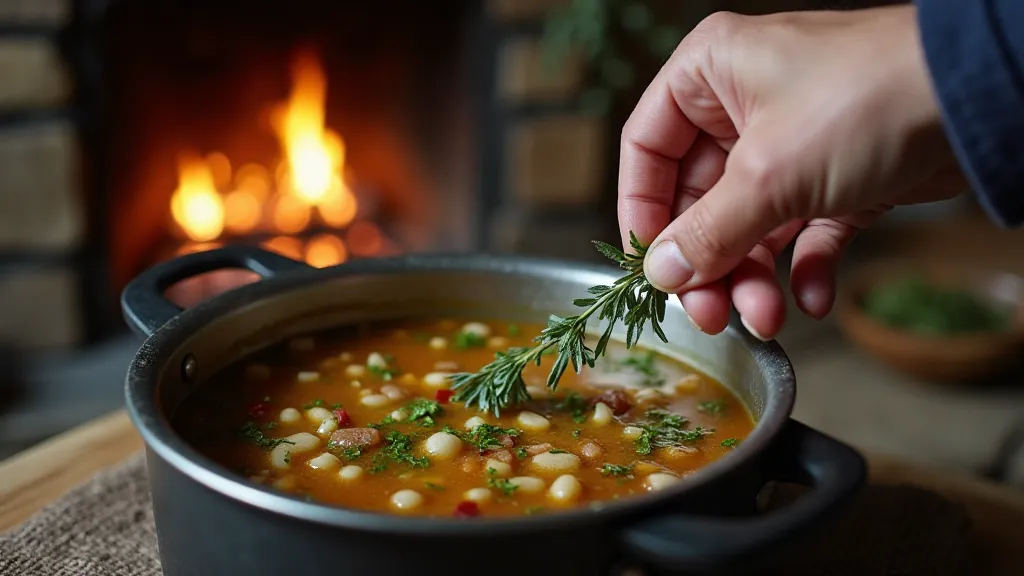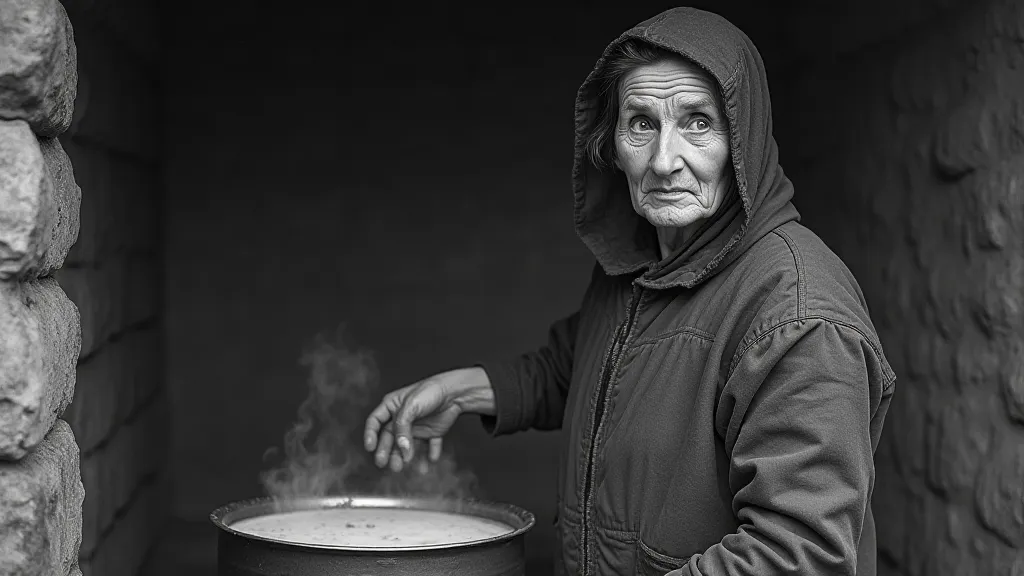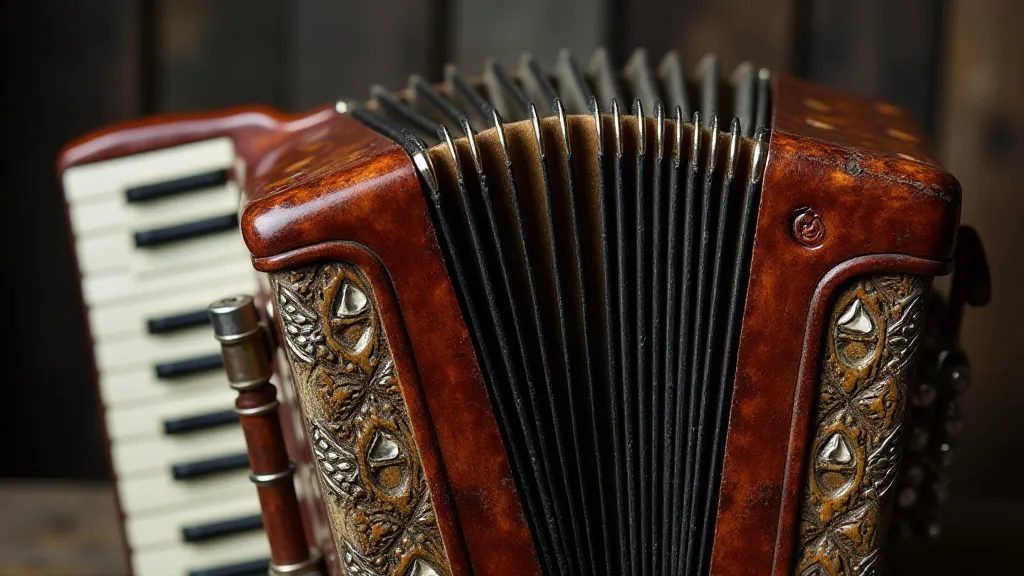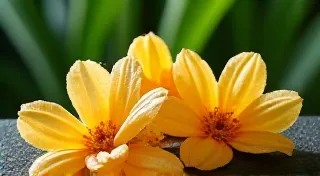The Hearth's Legacy: Scottish Broth and the Echoes of Highland Survival
The scent of simmering broth, rich and earthy, hangs in the air. It’s a smell that transcends mere nourishment; it’s a whisper of history, a tangible link to generations past. In Scotland, particularly in the Highlands and Islands, broth isn’t simply a soup – it’s a legacy. A testament to resilience, resourcefulness, and an enduring connection to the harsh, beautiful land. To understand Scottish broth is to understand a little bit about the soul of Scotland itself.
My own grandfather, Angus, was a crofter in the Outer Hebrides. He rarely spoke of his childhood, but I remember one particular evening, the rain lashing against the windows of his tiny cottage. He was mending a fishing net, his hands gnarled and weathered like the ancient rocks that lined the shore. I asked him what he missed most about his youth. He didn't speak of toys or games. He spoke of the broth. "It kept us alive, lass," he said, his voice low and thick with memory. "Every bit of it. Nothing was wasted."

A History Steeped in Necessity
The story of Scottish broth isn't a glamorous one. It’s a story born of hardship. The Highland Clearances in the 18th and 19th centuries dramatically reshaped the landscape and forced countless people off their ancestral lands. Survival became an everyday battle. Fertile land was scarce, and the weather unforgiving. What little could be grown – neeps (turnips), tatties (potatoes), kale – had to be stretched to feed entire families. Meat was a luxury, often limited to occasional game or salted fish. The ingenuity required to thrive in such conditions echoes in other parts of the world, like the resourcefulness of the Navajo people, who masterfully transform scarcity into sustenance. You can learn more about their remarkable culinary traditions The Desert's Alchemy.
Broth, then, became the cornerstone of the Highland diet. It was a masterful exercise in using every single part of the animal, or even the plant. Tough cuts of beef or mutton, often overlooked in more affluent kitchens, were slow-cooked for hours until they yielded every last drop of flavor and nourishment. Vegetable scraps, bones, even discarded root ends found their way into the pot. The resulting liquid, far from being thin or watery, was a concentrated elixir of sustenance – a lifeline in a land where every calorie counted.
The Art of the “Neeps and Tatties” Broth
While there's no single, definitive “Scottish broth” recipe, the fundamentals remain consistent. Neeps and tatties form a core ingredient – their earthy sweetness balancing the savory richness of the meat. Kale, or other leafy greens, contribute vitamins and texture. Often, barley or oats are added to thicken the broth and provide extra carbohydrates.
My grandmother, Elspeth, possessed a broth that could warm you to your very bones on the coldest winter's day. She always added a secret ingredient: a small piece of smoked bacon. "It gives it a wee bit o' magic," she would say with a twinkle in her eye. The real magic, however, lay in the technique – the hours spent patiently coaxing flavor from the seemingly simplest of ingredients. It’s a skill passed down through generations, a tangible expression of cultural heritage. The dedication to quality and preservation of tradition extends to other forms of craftsmanship, reminiscent of the reverence shown for nature’s bounty, as exemplified by the culinary legacy of the people of Karnataka and their rich coastal cuisine, found “A Pastoral Chorus.”

Beyond Sustenance: Broth as a Cultural Symbol
Scottish broth represents far more than simple sustenance. It embodies the principles of resourcefulness and respect for the land – values deeply ingrained in the Highland character. There was a profound sense of community around the pot. Broth was often shared between neighbors, a gesture of solidarity and a vital contribution to collective survival. The long simmering time also encouraged shared time. Stories were told, songs were sung, and the bonds of kinship were strengthened around the steaming pot. This communal aspect of food preparation and consumption is a recurring theme across cultures, mirrored by the close relationship between the people of the Mekong River and the flavors that dictate their rice paddies - a story told in “The Lavender Fields’ Kiss.”
Even today, sharing a bowl of traditional Scottish broth evokes a sense of connection – to the past, to the land, and to the shared heritage of the Highland people. The act of making broth is a meditative one, a chance to slow down and appreciate the simple gifts of nature. The fragrant steam carries a thousand stories, whispering of resilience and enduring spirit.
The Collector’s Accordion & the Essence of Craftsmanship
Speaking of heritage, my grandfather also collected antique accordions. He saw a parallel between the craftsmanship of a finely tuned instrument and the painstaking care that goes into making a perfect broth. Each bellows, each key, each hand-carved detail spoke of a dedication to quality and a respect for tradition. Just as a skilled cook understands the subtle nuances of flavor, an accordion maker understands the delicate balance of air and sound.
He possessed a particularly beautiful accordion, a Dixon from the 1920s. Its mother-of-pearl keys gleamed softly under the lamplight, and its rich, resonant tone could fill a room with warmth. He would spend hours meticulously cleaning and maintaining it, ensuring that it would continue to sing for generations to come. Restoring an antique accordion is a labor of love, requiring patience, skill, and a deep appreciation for the artistry of the past. Identifying the maker is key, and small maker’s marks are often overlooked. The value of an original bellows is vital - often requiring careful repair or, in severe cases, complete replacement. Just as prized spices such as ginger possess their own enduring soul and are passed down through generations, it’s a sentiment echoed in the Caribbean, “The Crimson Thread.”

A Legacy to Savor
The hearth’s legacy lives on. While modern life has brought about changes, the tradition of making and sharing Scottish broth remains a cherished practice. It's a tangible reminder of a time when survival depended on resourcefulness, community, and a deep respect for the land. The next time you find yourself simmering a pot of broth, take a moment to appreciate the history and the heritage that you are upholding. Breathe in the fragrant steam and listen – you might just hear the echoes of Highland survival. It’s a spirit born of necessity and nurtured by community, a tradition that resonates across the globe, influencing cuisine and culture wherever people face the challenge of transforming scarcity into sustenance and echoing in the songs of those who work the land.
Beyond the immediate satisfaction of a hearty meal, making Scottish broth is a journey—a quiet connection to the past and an embrace of the future. It’s a practice that encourages mindful cooking, a slowing down to appreciate the process and the ingredients. The patience required to coax flavor from simple components is a lesson in itself, a reminder that the best things in life are often worth the wait. Consider the parallels between this meticulous approach and the work of artisans across cultures who strive to create something beautiful and enduring. The dedication to preserving traditions and honoring craftsmanship is a universal value, a testament to the human desire to leave a lasting legacy.
The stories and traditions interwoven with Scottish broth are not merely historical curiosities; they are living, breathing elements of Scottish identity. Sharing a bowl of broth is not simply a culinary experience; it’s a symbolic act of cultural transmission, a way of passing down knowledge and values from one generation to the next. It's a story, a memory, and a promise, all simmering in one pot.





